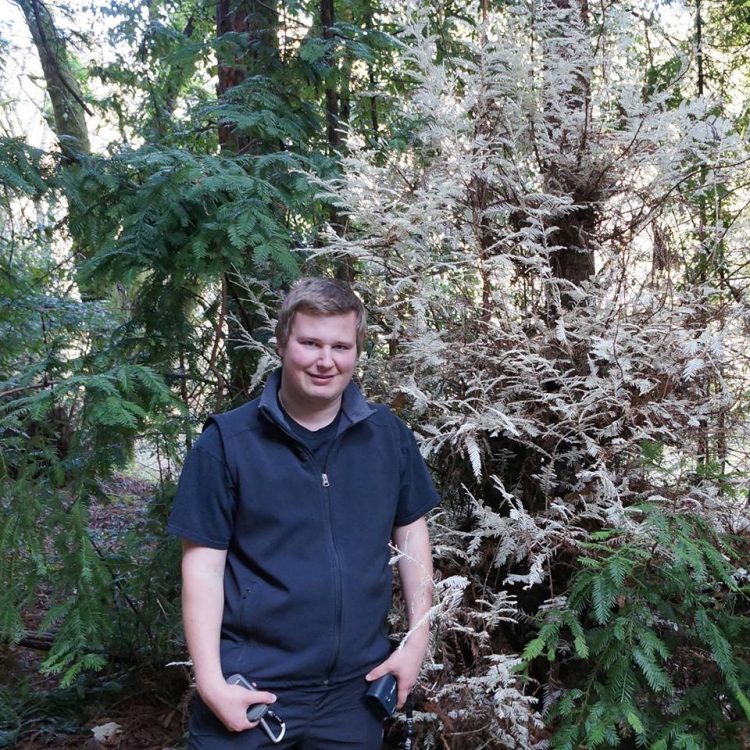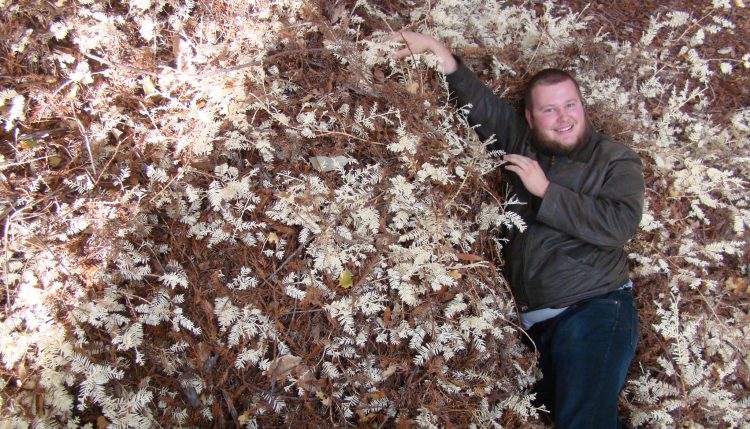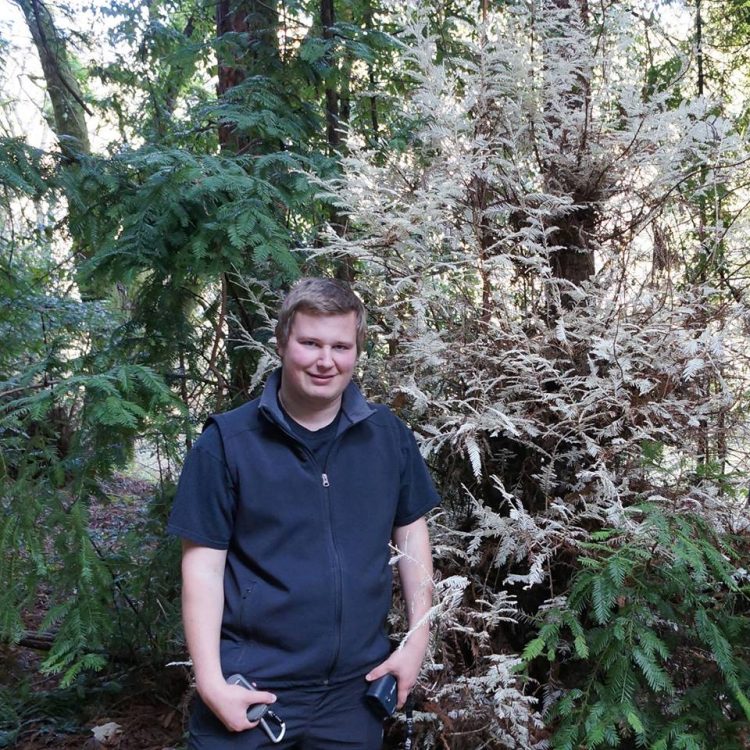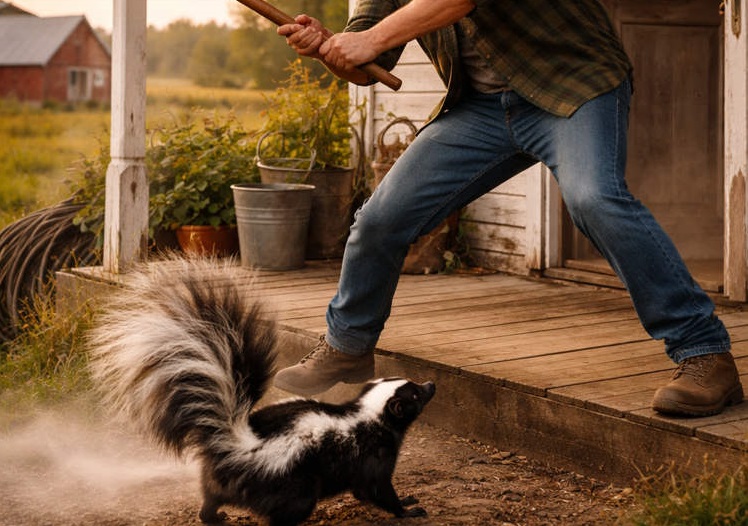For the vast majority of plants, an inability to produce chlorophyll is synonymous with death, but that general rule apparently doesn’t apply to the hundreds of documented “albino redwoods” in Humboldt Redwoods State Park, California. Some of them are almost completely white, others, known as redwood chimeras, are half green and half white, but they have one thing in common – they should be dead, and yet they are not.
These mysterious albino redwoods have been puzzling scientists for over 100 years. Their very existence is so preposterous that many of those who haven’t seen one up close question whether that are real or just a myth. Zane Moore, a young biologist working to unravel the mechanism that allows albino trees to survive, assures us that these elusive trees are very real, but their exact location is being kept a secret to protect them against hordes of tourists looking for unusual attractions.

Photo: Zane Moore/Facebook
Moore was only a teenager when he first heard about albino redwoods of Humboldt Redwoods State Park, in 2008. They were talking about them on the radio and he found the topic fascinating, so he set out to find one himself. His search missions through the giant redwood forest allowed him to interact with botanists, park rangers and other plant enthusiasts, experiences which shaped his future career. At just 22-years-old, Zane Moore is one of the foremost experts on albino redwoods.
Moore and a handful of other scientists have found 411 albino redwoods in the millions of acres of redwood forest, some featuring more white branches than others. They sometimes call them “ghosts of the forest” and for good reason. “It shouldn’t be here. It should be dead, but it’s not, just like a ghost,” Zane says.
For years, other scientists have referred to the pale branches of albino redwoods as parasites, but it didn’t make sense to Moore that a tree that ruthlessly gets rid of any unproductive branches would just tolerate such a peculiar parasite for years. There had to be more to this mystery than simple parasitic relationship, so the young scientists teamed up with arborist Tom Stapleton to document the locations of the trees, in search for clues.

Photo: Zane Moore/Facebook
What they found was very interesting: all of the albino trees were found on the outer reaches of Humboldt Redwoods State Park. Due to specific soil and environmental conditions, redwood trees don’t grow beyond a certain point, and it was near these edges that most of the albinos were located. After analyzing the soil in these areas, Moor and Stapleton stumbled upon another interesting aspect – it contained higher levels of heavy metals, such as nickel, copper, and cadmium. And testing clippings from albino redwoods and normal ones, they found that the former had double the levels of heavy metals than the latter, on average.
Interestingly, these levels of heavy metals would be deadly for a normal, green redwood, but not for the “ghosts”. Heavy metals poison the pathways making chlorophyll, making it impossible for the tree to photosynthesize, but that’s not a problem for the white, chlorophyll-free branches. “It’s kind of like heavy metal poisoning, a human example would be lead poisoning,” Moore says.
The 22-year-old albino redwood expert believe that the white branches have a symbiotic relationship with the green ones. They suck up all the dangerous heavy metals, keeping the green parts healthy, and in return, the regular branches supply it with the chlorophyll needed to survive.

Photo: Zane Moore/Facebook
“It’s like an investment, that’s a good way to look at it,” Moore told VICE. “If you think about it from a plant perspective, if the plant invests a little bit of its sugars into creating this white useless structure, and that useless structure actually worked, actually allows the plant to grow quicker, then the plant would want to do that again. And year after year grow that out and that’s how you get these big albino branches.”
That still wouldn’t explain how completely white redwood trees survive, but apparently, as long as they are close enough to a healthy redwood – usually their parent tree – they can graft their roots onto theirs and receive enough nutrients to survive. Most albino trees, especially those that are completely white, look weak and malnourished, because they only receive a small quantity of chlorophyll, definitely not enough to thrive.
Redwood chimeras, those trees that are half green and half white, are even more fascinating, because they have two different sets of DNA, which is like having two different people living in one body. Such specimens are very rare. Zane Moore has only found 10 specimens in the giant redwood forest.
His theory regarding the symbiotic relationship between albino and healthy redwood trees is only that, a theory, at least for the time being. He and other researchers are conducting experiments to test out this hypothesis, and even if it turns out to be wrong, it will at least offer some information to eventually crack the mystery. “It’s literally a matter of time before we have a good idea of what’s happening,” Moore said.
Until then, the albino trees of Humboldt Redwoods State Park remain just as mysterious and fascinating as ever.













